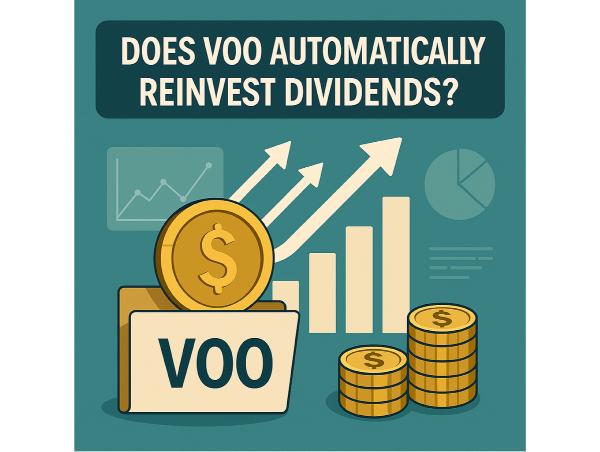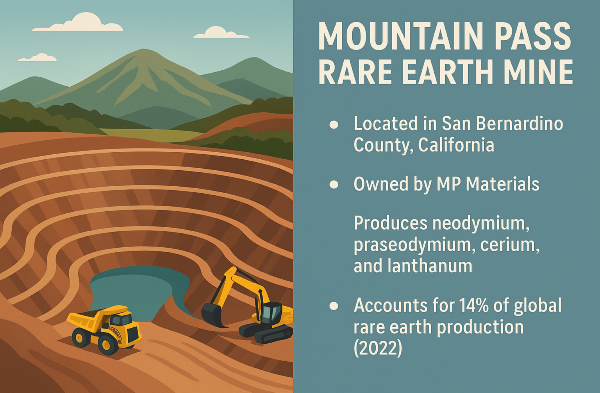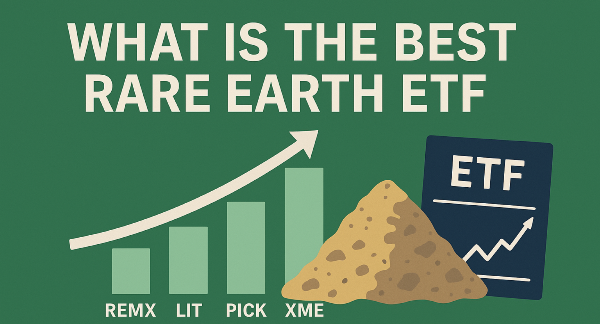Introduction
VOO, the Vanguard S&P 500 ETF, is a widely recognized fund that tracks the performance of the S&P 500 index, offering investors exposure to large-cap U.S. equities. It distributes dividends quarterly, providing shareholders with regular income opportunities. Investors can choose to reinvest these dividends, allowing their holdings to grow through compounding returns. Dividend reinvestment plays a crucial role in long-term portfolio expansion, as reinvested earnings generate additional shares, enhancing overall returns over time. This strategy is particularly beneficial for those seeking steady growth without frequent trading.
Understanding VOO Dividend Reinvestment
VOO, the Vanguard S&P 500 ETF, distributes dividends quarterly, providing investors with regular income from the fund’s holdings. Since VOO tracks the S&P 500, it includes dividend-paying companies such as Microsoft and Apple. Investors receive these dividends as cash payments unless they opt for reinvestment. The dividend yield of VOO fluctuates based on market conditions and the performance of its underlying stocks. Investors have multiple options for reinvesting dividends in VOO, depending on their brokerage account settings. Some brokerages offer automatic dividend reinvestment plans, allowing investors to use their dividend payouts to purchase additional shares of VOO without incurring transaction fees.
The primary difference between automatic and manual dividend reinvestment lies in convenience and control. Automatic reinvestment ensures that dividends are immediately reinvested, maximizing compounding benefits without requiring investor intervention. Manual reinvestment, on the other hand, allows investors to decide when and how to reinvest their dividends, potentially capitalizing on market fluctuations.
Sources
24/7 Wall St.
Reddit Discussion
Cubicle No More
Benefits of Dividend Reinvestment in VOO
Dividend reinvestment in VOO allows investors to benefit from compounding growth, leading to long-term wealth accumulation. When dividends are reinvested, they purchase additional shares of VOO, increasing the overall investment value over time. Companies such as Microsoft and Apple contribute to VOO’s dividend payouts, ensuring steady returns. This reinvestment strategy enhances portfolio growth without requiring additional capital. Cost efficiency is another advantage of dividend reinvestment in VOO, as it reduces transaction fees associated with purchasing new shares.
By automatically reinvesting dividends, investors avoid market timing risks and maintain consistent exposure to large-cap stocks such as Amazon and Alphabet.
This approach ensures that dividends contribute directly to portfolio expansion rather than remaining idle as cash. Dividend reinvestment also enhances portfolio diversification and stability by continuously increasing holdings in VOO. As reinvested dividends purchase additional shares, investors gain broader exposure to the S&P 500 index, which includes companies like JPMorgan Chase and Bank of America. This strategy strengthens portfolio resilience against market fluctuations while maintaining a steady accumulation of assets.
Sources
Reddit Discussion
Forbes
Dividends Diversify
Potential Drawbacks of Automatic Dividend Reinvestment
- Automatic dividend reinvestment in VOO can limit flexibility in cash flow management, as dividends are immediately used to purchase additional shares rather than being available for withdrawal. Investors who rely on dividend income for expenses may find this approach restrictive. Companies such as Microsoft and Apple contribute to VOO’s dividend payouts, but reinvesting automatically means investors cannot allocate funds elsewhere. Tax implications are another consideration for investors opting for automatic dividend reinvestment. Even though dividends are reinvested rather than received as cash, they are still subject to taxation. Companies such as Amazon and Alphabet generate dividend income within VOO, but reinvested dividends may lead to unexpected tax liabilities.
- Market timing risks associated with automatic dividend reinvestment can affect portfolio performance. Since reinvestment occurs immediately upon dividend distribution, investors may purchase shares at unfavorable prices. Stocks such as JPMorgan Chase and Bank of America fluctuate in value, meaning reinvested dividends may be allocated at market highs rather than lows.
Sources
Dividends Diversify
Dummies
Sharesight
Does VOO Automatically Reinvest Dividends?
VOO, the Vanguard S&P 500 ETF, does not automatically reinvest dividends unless investors enable the feature through their brokerage account. Investors can opt for a dividend reinvestment plan (DRIP), which allows dividends to be used to purchase additional shares of VOO without incurring transaction fees. Companies such as Microsoft and Apple contribute to VOO’s dividend payouts, making reinvestment a strategic option for long-term portfolio growth. By enabling automatic reinvestment, investors benefit from compounding returns, increasing their holdings over time.
Comparing VOO’s reinvestment policy with other ETFs highlights key differences in dividend management. Some ETFs, such as SPDR S&P 500 ETF Trust, require manual reinvestment, while others offer built-in reinvestment options. Investors can activate DRIP through brokerage platforms, ensuring dividends are reinvested seamlessly. Companies like Amazon and Alphabet are frequently included in large-cap ETFs, reinforcing the benefits of reinvestment for portfolio expansion. Understanding these reinvestment policies helps investors optimize their strategies for sustained financial growth.
Sources
FinanceBand
Reddit Discussion
Suze Orman
Comparison Between VOO and Other Dividend-Paying ETFs
VOO, the Vanguard S&P 500 ETF, follows a passive investment strategy, tracking the S&P 500 index and distributing dividends quarterly. VOO requires investors to enable reinvestment through their brokerage accounts. Other dividend-paying ETFs, such as SPDR S&P 500 ETF Trust and iShares Core S&P 500 ETF, offer similar dividend distribution policies but may differ in reinvestment options. Investors must compare these ETFs. Active and passive dividend reinvestment strategies influence ETF performance and investor returns. Passive ETFs like VOO reinvest dividends only when investors opt in, ensuring a consistent approach to portfolio growth. Actively managed ETFs, however, allow fund managers to adjust reinvestment strategies based on market conditions. Funds such as Schwab U.S. Dividend Equity ETF and Vanguard High Dividend Yield ETF focus on dividend-paying stocks, offering higher yields but requiring active management decisions.
Evaluating ETF performance based on dividend reinvestment requires analyzing historical returns and yield consistency. VOO maintains a stable dividend payout, benefiting from holdings in companies like Microsoft and Apple. ETFs with higher dividend yields, such as iShares Select Dividend ETF, may offer greater income potential but could experience volatility. Investors should consider reinvestment policies, expense ratios, and long-term growth prospects when selecting dividend-paying ETFs for their portfolios.
Sources
Stock Analysis
Wall Street Simplified
Forbes
Market Trends and Future Outlook for Dividend Reinvestment in ETFs
ETF dividend reinvestment is expected to grow as investors seek passive income strategies and long-term wealth accumulation. Large-cap ETFs such as VOO and SPY continue to attract investors due to their stability and consistent dividend payouts. Analysts predict that dividend reinvestment adoption will increase as brokerage platforms enhance automation features, making reinvestment more accessible.
Despite the positive outlook, dividend reinvestment in ETFs faces emerging risks, including market volatility and regulatory changes. Companies such as Microsoft and Apple contribute to ETF dividend yields, but fluctuations in stock performance may impact reinvestment returns. Additionally, tax implications and liquidity concerns could affect investor decisions. However, opportunities remain in sectors poised for growth, such as sustainable energy and technology.
Sources
Dividend.com
Vanguard
PwC
Conclusion
VOO’s dividend reinvestment policy provides investors with a valuable opportunity to enhance portfolio growth through compounding returns. While it does not automatically reinvest dividends, investors can enable this feature through their brokerage accounts, optimizing wealth accumulation over time. Comparing VOO with other dividend-paying ETFs highlights its passive approach and stability, making it an attractive choice for long-term investors seeking consistent income. As ETF adoption continues to rise, dividend reinvestment strategies will play a key role in shaping investment portfolios, balancing growth potential with liquidity and tax considerations.
📌Read More About:
The Top Large Cap Stocks- https://stockbossup.com/pages/topics/large-cap
Why is VOO So Popular?- https://stockbossup.com/pages/post/38754/why-is-voo-so-popular
Is VOO Large Cap Growth?- https://stockbossup.com/pages/post/38751/is-voo-large-cap-growth




























Introduction
VOO, the Vanguard S&P 500 ETF, is a widely recognized fund that tracks the performance of the S&P 500 index, offering investors exposure to large-cap U.S. equities. It distributes dividends quarterly, providing shareholders with regular income opportunities. Investors can choose to reinvest these dividends, allowing their holdings to grow through compounding returns. Dividend reinvestment plays a crucial role in long-term portfolio expansion, as reinvested earnings generate additional shares, enhancing overall returns over time. This strategy is particularly beneficial for those seeking steady growth without frequent trading.
Understanding VOO Dividend Reinvestment
VOO, the Vanguard S&P 500 ETF, distributes dividends quarterly, providing investors with regular income from the fund’s holdings. Since VOO tracks the S&P 500, it includes dividend-paying companies such as Microsoft and Apple. Investors receive these dividends as cash payments unless they opt for reinvestment. The dividend yield of VOO fluctuates based on market conditions and the performance of its underlying stocks. Investors have multiple options for reinvesting dividends in VOO, depending on their brokerage account settings. Some brokerages offer automatic dividend reinvestment plans, allowing investors to use their dividend payouts to purchase additional shares of VOO without incurring transaction fees.
The primary difference between automatic and manual dividend reinvestment lies in convenience and control. Automatic reinvestment ensures that dividends are immediately reinvested, maximizing compounding benefits without requiring investor intervention. Manual reinvestment, on the other hand, allows investors to decide when and how to reinvest their dividends, potentially capitalizing on market fluctuations.
Sources
24/7 Wall St.
Reddit Discussion
Cubicle No More
Benefits of Dividend Reinvestment in VOO
Dividend reinvestment in VOO allows investors to benefit from compounding growth, leading to long-term wealth accumulation. When dividends are reinvested, they purchase additional shares of VOO, increasing the overall investment value over time. Companies such as Microsoft and Apple contribute to VOO’s dividend payouts, ensuring steady returns. This reinvestment strategy enhances portfolio growth without requiring additional capital. Cost efficiency is another advantage of dividend reinvestment in VOO, as it reduces transaction fees associated with purchasing new shares. By automatically reinvesting dividends, investors avoid market timing risks and maintain consistent exposure to large-cap stocks such as Amazon and Alphabet.
This approach ensures that dividends contribute directly to portfolio expansion rather than remaining idle as cash. Dividend reinvestment also enhances portfolio diversification and stability by continuously increasing holdings in VOO. As reinvested dividends purchase additional shares, investors gain broader exposure to the S&P 500 index, which includes companies like JPMorgan Chase and Bank of America. This strategy strengthens portfolio resilience against market fluctuations while maintaining a steady accumulation of assets.
Sources
Reddit Discussion
Forbes
Dividends Diversify
Potential Drawbacks of Automatic Dividend Reinvestment
Sources
Dividends Diversify
Dummies
Sharesight
Does VOO Automatically Reinvest Dividends?
VOO, the Vanguard S&P 500 ETF, does not automatically reinvest dividends unless investors enable the feature through their brokerage account. Investors can opt for a dividend reinvestment plan (DRIP), which allows dividends to be used to purchase additional shares of VOO without incurring transaction fees. Companies such as Microsoft and Apple contribute to VOO’s dividend payouts, making reinvestment a strategic option for long-term portfolio growth. By enabling automatic reinvestment, investors benefit from compounding returns, increasing their holdings over time.
Comparing VOO’s reinvestment policy with other ETFs highlights key differences in dividend management. Some ETFs, such as SPDR S&P 500 ETF Trust, require manual reinvestment, while others offer built-in reinvestment options. Investors can activate DRIP through brokerage platforms, ensuring dividends are reinvested seamlessly. Companies like Amazon and Alphabet are frequently included in large-cap ETFs, reinforcing the benefits of reinvestment for portfolio expansion. Understanding these reinvestment policies helps investors optimize their strategies for sustained financial growth.
Sources
FinanceBand
Reddit Discussion
Suze Orman
Comparison Between VOO and Other Dividend-Paying ETFs
VOO, the Vanguard S&P 500 ETF, follows a passive investment strategy, tracking the S&P 500 index and distributing dividends quarterly. VOO requires investors to enable reinvestment through their brokerage accounts. Other dividend-paying ETFs, such as SPDR S&P 500 ETF Trust and iShares Core S&P 500 ETF, offer similar dividend distribution policies but may differ in reinvestment options. Investors must compare these ETFs. Active and passive dividend reinvestment strategies influence ETF performance and investor returns. Passive ETFs like VOO reinvest dividends only when investors opt in, ensuring a consistent approach to portfolio growth. Actively managed ETFs, however, allow fund managers to adjust reinvestment strategies based on market conditions. Funds such as Schwab U.S. Dividend Equity ETF and Vanguard High Dividend Yield ETF focus on dividend-paying stocks, offering higher yields but requiring active management decisions.
Evaluating ETF performance based on dividend reinvestment requires analyzing historical returns and yield consistency. VOO maintains a stable dividend payout, benefiting from holdings in companies like Microsoft and Apple. ETFs with higher dividend yields, such as iShares Select Dividend ETF, may offer greater income potential but could experience volatility. Investors should consider reinvestment policies, expense ratios, and long-term growth prospects when selecting dividend-paying ETFs for their portfolios.
Sources
Stock Analysis
Wall Street Simplified Forbes
Market Trends and Future Outlook for Dividend Reinvestment in ETFs
ETF dividend reinvestment is expected to grow as investors seek passive income strategies and long-term wealth accumulation. Large-cap ETFs such as VOO and SPY continue to attract investors due to their stability and consistent dividend payouts. Analysts predict that dividend reinvestment adoption will increase as brokerage platforms enhance automation features, making reinvestment more accessible.
Despite the positive outlook, dividend reinvestment in ETFs faces emerging risks, including market volatility and regulatory changes. Companies such as Microsoft and Apple contribute to ETF dividend yields, but fluctuations in stock performance may impact reinvestment returns. Additionally, tax implications and liquidity concerns could affect investor decisions. However, opportunities remain in sectors poised for growth, such as sustainable energy and technology.
Sources
Dividend.com
Vanguard
PwC
Conclusion
VOO’s dividend reinvestment policy provides investors with a valuable opportunity to enhance portfolio growth through compounding returns. While it does not automatically reinvest dividends, investors can enable this feature through their brokerage accounts, optimizing wealth accumulation over time. Comparing VOO with other dividend-paying ETFs highlights its passive approach and stability, making it an attractive choice for long-term investors seeking consistent income. As ETF adoption continues to rise, dividend reinvestment strategies will play a key role in shaping investment portfolios, balancing growth potential with liquidity and tax considerations.
📌Read More About:
The Top Large Cap Stocks- https://stockbossup.com/pages/topics/large-cap
Why is VOO So Popular?- https://stockbossup.com/pages/post/38754/why-is-voo-so-popular
Is VOO Large Cap Growth?- https://stockbossup.com/pages/post/38751/is-voo-large-cap-growth